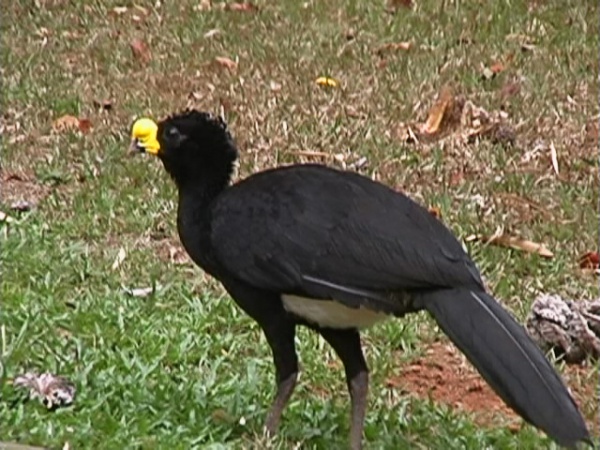Facts About Great curassow
The great curassow is an impressive bird that inhabits the Neotropical rainforests, ranging from eastern Mexico to western Colombia and northwestern Ecuador. Males are easily identified by their black plumage, curly crests, and vivid yellow beaks, while females exhibit three distinct color patterns.
These birds typically congregate in small groups and spend much of their time on the forest floor foraging for fruits, arthropods, and even small vertebrates. At night, they ascend into the trees to roost and nest, with the male customarily assuming nest-building responsibilities. Great curassows are monogamous and generally lay two eggs in a modest nest.
Unfortunately, the species is threatened by habitat destruction and hunting, which has earned it a "Vulnerable" status on the IUCN Red List.
In terms of size, the great curassow is one of the largest members of its family, measuring between 78 and 100 cm in length and weighing 3.1 to 4.8 kg. They have a distinctive appearance with their black bodies, curly crests, and a yellow knob on their bills. Females display three different color morphs. Their unique call, resembling a lingering whistle, also makes them easy to identify by sound.
Ecologically, these birds prefer rainforest environments and primarily feed on fruits and arthropods. They are social creatures, often seen in groups, though solitary birds are occasionally spotted. Males take the lead in nest-building, and both parents participate in raising their young. Known for their aggressive behavior, especially towards humans when in captivity, they face natural predators like ocelots and ornate hawk-eagles.
The great curassow's lineage dates back to the Late Miocene era in South America. Due to ongoing habitat loss and hunting, they are listed as Vulnerable by the IUCN. Conservation efforts, including captive breeding programs, are underway in some regions to protect this remarkable bird. Interestingly, they can also produce fertile hybrids with related species.

 Guatemala
Guatemala